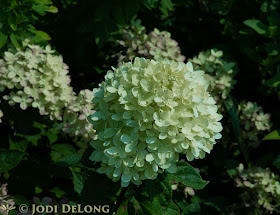Early last year, I decided it was time to challenge myself in new directions. I decided to learn to be a better photographer, learning my camera and lenses and settings, learning to use Lightroom and Photoshop for image storage, organization, and editing. To learn to go beyond taking photos of only plants (and occasionally cats) and to expand my areas of interest.
I will never be a professional photographer the way some of my heroes are--Freeman Patterson, Ernest Cadegan, John Sylvester, among others--but I learn from each of them from studying their work. I have learned to see in a different way than I once did. And I find the joy not in exotic locales, but around me. I derive enormous pleasure out of exploring my local world. Just shunpiking my way down back roads in Kings County, where I live, or other counties in the province, has yielded me much in the way of photographic delights, adventures and learning.
What makes a great photo? It's the photographer's eye, to begin with, not the tools. I took the above photo on a cold, blustery day about a month ago--with my iPhone. From my car window. I shared it on Facebook to rave reviews from friends, who loved the mood of it. Which is what I was going for, not technical perfection.
This, on the other hand, was taken with tripod, my Canon 70D, ND filter, etc...it also captures a mood. I had just as much fun making one as the other.
What I tell people is this; the camera is like the oven, the photographer is the cook. You create the image, and the camera captures it. Don't think you need a dozen lenses and an expensive camera to have fun and make beautiful pictures.
I am very fond of crows and ravens, which are extremely clever birds. I caught this one sitting on the fencepost leading to the French Cross in Grand-Pré, and just had to preserve the moment. The crow graciously stayed put for me to get a few pictures before soaring off on important crow duties.
We have a group of artists in Kings County who every year throughout the summer do an outdoor show around the county called Uncommon Common Art. Every piece is different, in different media, from fibre to metal to found objects and more. This is part of a recent installation, also in Grand-Pré, which is left standing over winter. Can't wait to see what goes up this year.
Naturally, being a gardener, I am very fond of trees, and I find them moody and rewarding subjects any time of the year. During a recent autumn storm, the surf was rocking and rolling along the shore by Halls Harbour, and I loved the steadfast trees, unphased by the weather.
Another day took me further down the shore into Annapolis County, on a summer day of torrential rainfalls and thunderstorms, resulting in streams full to overflowing and cascading off the rocky cliffs like some sort of a tropical other-worldly place.
Taking photos of people doesn't really interest me because I'm not good at it and people puzzle me rather a lot. But things that people MAKE is quite another story. Specifically, buildings. Old buildings. Abandoned or otherwise falling-down buildings. I have a huge affection for them, whether it be a seemingly nice, but very much abandoned house like this one, or some of the huge barns that are found all around the province (and elsewhere, but most of my building capturing has been in Nova Scotia. Some in Newfoundland last summer and a little in Iles de la Madeleine, but we'll get to those in due course.)
So, because this is my blog and I can post what I want, some images of life in my part of the world. I'll do this from time to time, and hope you'll enjoy--and more importantly, that you'll be encouraged to take your camera for a walk, or a drive, and see what you can find that makes your heart glad.












































